The Applications Business Office of the Integrated Applications Promotion (IAP) department in the Directorate of Telecommunications and Integrated Applications wishes to announce a vacancy for an Internal Research Fellowship with a starting date of 1st January 2012. The Research Fellowship is available for two years, and will be based at Harwell in the UK.
About the European Space Agency and the Integrated Applications Promotion (IAP) programme
The European Space Agency is Europeâs gateway to space. Its mission is to shape the development of Europeâs space capability and ensure that investment in space continues to deliver ever more benefits to all the citizens of Europe.
The objective of ESAâs Integrated Applications Promotion (IAP) programme is the development of operational services for a wide range of users through the combination of different systems. By using and integrating different space assets (Satellite Communication, Satellite Navigation, Earth Observation, Manned Space Technologies), improved or new services on a regional, national or European scale can be created. Intrinsic to these new applications is the added value of space and the long-term sustainability of the resulting services. The programme thereby responds to user needs in areas such as health, safety, energy, transport and development.
The main aim of the IAP programme is to identify user and stakeholder communities and to identify, foster and organise user demand (Capacity Building in the Integrated Space Applications domain). This also includes the creation of partnerships with suitable user communities. The Research Fellow will be responsible for stimulating one or more new applications that utilise and integrate different space assets, resulting in new or improved services. In order to carry out his/her function the Research Fellow will work within a dedicated team.
Duties
The Research Fellow will report to the Head of the Applications Business Office and will be responsible for research activities within any of the disciplines of the Integrated Applications Promotion (IAP) programme
The Research Fellow will have as his/her main responsibilities:
-
Research in a chosen discipline to assist in the establishment of one or more IAP projects.
-
Preparation of new Regional or Thematic application fields.
-
Supporting identification of User Communities and their Needs.
-
Identification of appropriate Space Capabilities (Satellite Navigation, Telecommunications and Earth Observation).
-
Identification of technological gaps, in order to propose future missions and systems.
-
Supporting preparation of promotional materials and workshops to federate user communities.
Some examples of ongoing IAP initiatives that the Research Fellow might support include activities on the Arctic; Offshore Renewable Energy; Under-developed Countries; Machine to Machine (M2M) or Internet of Things (IOT); Insurance / Reinsurance; Maritime Safety and Security; Carbon Trading; and Tourism.
Qualifications
Applicants must have recently attained their doctorate or be close to successfully completing such studies in space science, space applications or techniques, or other fields closely connected to space activities in one or more of the target domains for IAP initiatives noted above. This might for instance include Geographical Information Systems, the commercialisation of space technology, or business, commerce and economic analysis.
Applicants for this post should preferably also have significant and sound experience in at least one of the space technologies covered by this position (i.e. in the Telecommunications, Satellite Navigation and Earth Observation sectors), ideally with a specific emphasis on applications.
Other qualifications required by the candidate include:
-
Strong analytical, strategic and problem solving skills.
-
Creativity and an innovative attitude.
-
Good communication, interpersonal and presentation skills.
-
Self-motivated and disciplined, with the ability to plan and manage own work.
-
Ability to cope under pressure and ensure deadlines are met.
-
Strong attention to detail.
-
Good organisation skills.
-
Results orientated, with a strong drive to deliver.
-
Good team player, able to work in a close-knit team and also in an international environment.
-
Proficient in all MS Office packages.
The working languages of the Agency are English and French. A good knowledge of English is required for this post.
How to Apply
Please apply via the applicant webpage on the ESA web-site:
http://www.esa.int/SPECIALS/Careers_at_ESA/SEMICLRTJRG_0.html
Please mark your application with âIAP Applications Business Officeâ in the title, as well as providing a detailed description of your proposed area of research. This must be within one of the specified IAP themes. Applications should be submitted under the âInternal Fellowship Programmeâ.
Please send your applications for this post by 7th December 2011. Later applications will only be considered if no suitable candidate has been selected.
 The control and surveillance of borders is an essential function of any state which if done efficiently, can lead to a reduction in cross-border crime and illegal migration.
The control and surveillance of borders is an essential function of any state which if done efficiently, can lead to a reduction in cross-border crime and illegal migration. During this proof of concept demonstration techniques for tracking patrols and distributing the information to commanders, the use of satellite communications, and Earth observation techniques were demonstrated. The Earth observation products included reference mapping, hot spot monitoring, and techniques to develop permeability mapping for the border area. These products were distributed to the field locations over satellite communications links.
During this proof of concept demonstration techniques for tracking patrols and distributing the information to commanders, the use of satellite communications, and Earth observation techniques were demonstrated. The Earth observation products included reference mapping, hot spot monitoring, and techniques to develop permeability mapping for the border area. These products were distributed to the field locations over satellite communications links.


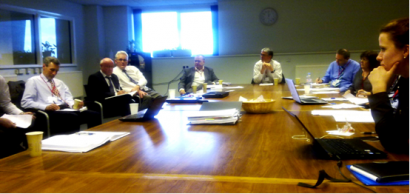

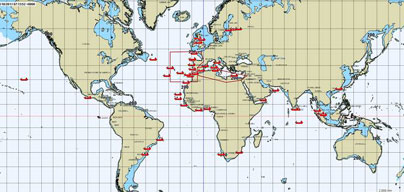 Selected offshore vessels within EU waters and beyond are now in sight of EU customs officials as an ESA demonstration project, in support to the European Maritime Safety Agencyâs Blue Belt pilot project, gets fully underway.
Selected offshore vessels within EU waters and beyond are now in sight of EU customs officials as an ESA demonstration project, in support to the European Maritime Safety Agencyâs Blue Belt pilot project, gets fully underway.
 IAP is pleased to announce the start-up of the Ambassador Platform for Dual-Use Space-based Services (APDUSS). The Ambassador Platform will be managed by the Office of the Advisor for Aerospace Activities in the Italian Ministry of Defence. The main objective will be to assist the IAP programme in spreading awareness for potential stakeholders in ESAâs IAP programme in the field of dual-use.
IAP is pleased to announce the start-up of the Ambassador Platform for Dual-Use Space-based Services (APDUSS). The Ambassador Platform will be managed by the Office of the Advisor for Aerospace Activities in the Italian Ministry of Defence. The main objective will be to assist the IAP programme in spreading awareness for potential stakeholders in ESAâs IAP programme in the field of dual-use.
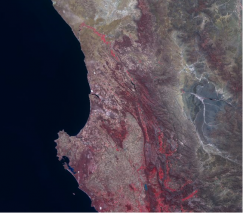

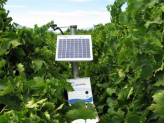
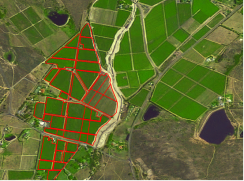
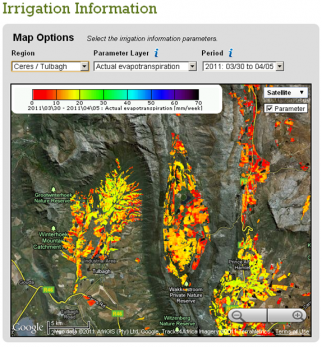
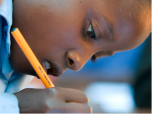 This workshop covered four sessions followed by lively plenary discussions: Space and Climate Change, Space for Food and Water, Space for Health and Space for Environment.
This workshop covered four sessions followed by lively plenary discussions: Space and Climate Change, Space for Food and Water, Space for Health and Space for Environment.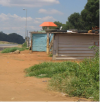 Mr. Neo Modise, a user representative from SASOL Gas in Johannesburg, clearly illustrated the need for improved and more efficient monitoring of pipelines integrity and related threats (
Mr. Neo Modise, a user representative from SASOL Gas in Johannesburg, clearly illustrated the need for improved and more efficient monitoring of pipelines integrity and related threats ( In the session for Integrated Application Tools (B5.2), Prof. Dr. Alexander Horsch (Institute for Medical Statistics) stressed the importance of e-Health to save lives and detailed IAP.s newly started programme e-Health for 48 countries of Sub-Saharan Africa. Finally, the presentation of the
In the session for Integrated Application Tools (B5.2), Prof. Dr. Alexander Horsch (Institute for Medical Statistics) stressed the importance of e-Health to save lives and detailed IAP.s newly started programme e-Health for 48 countries of Sub-Saharan Africa. Finally, the presentation of the